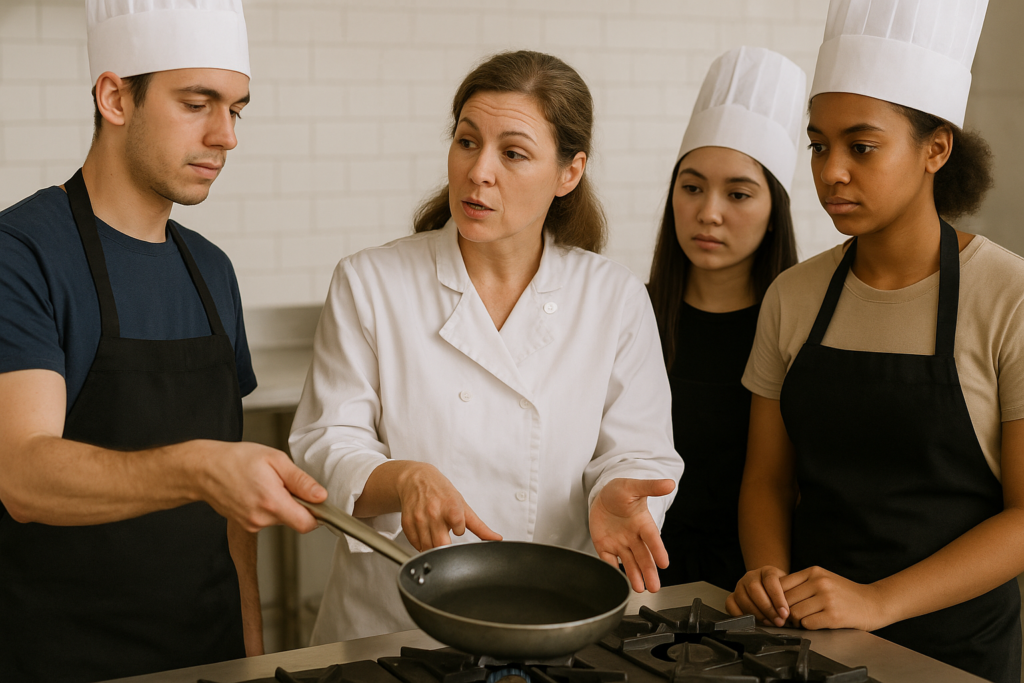Last Updated on 19 June 2025 by editablematerials.in
CBSE Class 7 Science Chapter 3 Case Study Questions – based on Heat help students understand the concepts of temperature, modes of heat transfer, and the scientific reasoning behind every day phenomena like clothing choices in different seasons.
These case-based questions follow the CBSE competency-based format, promoting critical thinking and real-life application.
🔍 Chapter Summary
This chapter explains the concept of heat and temperature. It discusses how we perceive hot and cold objects, the use and structure of thermometers (clinical and laboratory), and various methods of heat transfer—conduction, convection, and radiation. It also elaborates on conductors and insulators of heat, the behavior of different materials in heat transfer, and why we wear specific types of clothes in different seasons. The chapter integrates real-life examples and activities to make scientific concepts more relatable and comprehensible.
📝 Case Study Question 1
Read the passage and answer the questions:
Ria had a fever, so her mother used a clinical thermometer to check her body temperature. Before using it, she ensured the mercury level was below 35°C, then placed the bulb of the thermometer under Ria’s tongue. After a minute, the reading showed 38.5°C. Concerned, Ria’s mother washed the thermometer with antiseptic and advised her to rest.

Questions:
- Why is it important to ensure the mercury level in the clinical thermometer is below 35°C before use?
- Explain why the thermometer is placed under the tongue and not elsewhere on the body.
- What precautions should be taken while handling a clinical thermometer?
- Why is Ria’s body temperature considered a fever?
Answers:
1. Mercury Level Below 35°C: To ensure an accurate reading, the thermometer must start below the expected body temperature. If it’s above 35°C, the actual body temperature might not be recorded correctly.
2. Placement Under Tongue: This area is close to the body’s core and provides a consistent and reliable temperature reading.
3. Precautions:
- Wash with antiseptic before and after use.
- Ensure mercury level is below 35°C before use.
- Handle carefully to prevent breakage.
- Read at eye level.
4. Ria’s Temperature: 38.5°C is above the normal human body temperature of 37°C, indicating a fever.
🔗 White Label Editable Study Material – Download & Customize
🎓 Looking for fully editable Study Materials with your own branding or watermark?
✅ Ready to use in class
✅ Fully customizable
✅ White Label Materials
✅ Available in Word (.docx) or PageMaker format
✅ Add your school or institute logo
👉 Download CBSE Class 7 Editable Materials
📝 Case Study Question 2
Read the passage and answer the questions:
During a cooking class, students noticed that the metal handle of a frying pan became hot while cooking. Their teacher explained that the heat from the stove traveled through the metal by conduction. She also pointed out that some pans have wooden or plastic handles to prevent burns.

Questions:
- What is conduction and how does it apply in the context of the frying pan?
- Why are wooden or plastic handles used in cooking utensils?
- How does the structure of solids contribute to heat transfer by conduction?
- Can plastic and wood be used to make the entire utensil? Justify your answer.
Answers:
- Conduction Explanation: Conduction is the transfer of heat through solids. In this case, heat from the stove travels through the metal pan to the handle.
- Wood/Plastic Handles: These are poor conductors (insulators), preventing heat transfer to the handle and protecting hands from burns.
- Solids and Heat Transfer: Solids, especially metals, have tightly packed particles that transfer heat efficiently by vibration and collision.
- Whole Utensil from Plastic/Wood: No, because these materials can’t withstand high cooking temperatures and may melt or catch fire.
📝 Case Study Question 3
Read the passage and answer the questions:
In summer, Amit prefers wearing light-coloured cotton clothes. One day, his cousin wore a black t-shirt outdoors and complained of feeling hotter. Their grandmother explained that light colours reflect heat while dark colours absorb it, making light-coloured clothes more suitable for hot weather.

Questions:
- Why are light-coloured clothes preferred in summer?
- Explain how the property of radiation is involved in this scenario.
- What role does the fabric material (like cotton) play in keeping the body cool?
- Would Amit’s cousin feel cooler wearing a white t-shirt instead? Why or why not?
Answers:
- Light-Coloured Clothes in Summer: They reflect most of the sun’s rays, reducing heat absorption and keeping the body cooler.
- Radiation Role: Heat from the sun reaches us through radiation. Dark colours absorb more radiation, making us feel hotter.
- Cotton’s Role: Cotton is breathable and absorbs sweat, which cools the body as the moisture evaporates.
- White T-Shirt Effect: Yes, white reflects sunlight, so it would keep the wearer cooler compared to black which absorbs heat.
🛠️ Download PPT for CBSE Class 7
Looking for ready-to-use, visually engaging PowerPoint presentations for CBSE Class 7?
We offer chapterwise editable PPTs designed according to the latest CBSE Class 7 syllabus. Perfect for classroom teaching, smart board use, or online lessons.
✅ Features of Our Class 7 PPTs:
- Suitable for offline or online teaching platforms
- Covers all subjects: Science, Maths, SST, English, and Hindi
- Fully editable in PowerPoint (.pptx format)
- Includes diagrams, key points, and animations
- Easy to customize with school logos or watermarks
🎓 Who Is It For?
- CBSE school teachers
- Coaching institutes
- Tutors and academic content creators
🔗 Download Now
👉 Download CBSE Class 7 PPTs (Editable Format)
More Case Study Questions from Class 7 Science
- CBSE Class 7 Science Chapter 3 Case Study Questions with Answers – Heat
- CBSE Class 7 Science Chapter 2 Case Study Questions with Answers – Nutrition in Animals
- CBSE Class 7 Science Chapter 1 Case Study Questions with Answers – Nutrition in Plants
You may also like

❓ Frequently Asked Questions (FAQs)
Q1: Are these questions based on the latest CBSE Class 7 Science syllabus?
A1: Yes, all questions follow the latest NCERT syllabus and CBSE competency-based question format.
Q2: Can I use these questions for class assignments or tests?
A2: Absolutely! These case studies are ideal for worksheets, oral discussions, or written tests.
Q3: Are editable versions of these questions available?
A3: Yes. We offer fully editable Word (.docx) versions of all case study and assertion-reason questions. You can add your school logo, watermark, or modify content to suit your teaching needs.
👉 Get Editable Materials Here
Q4: Can I edit and customize these questions for my school or coaching center?
A4: Yes. Download our DOCX version, add your logo, edit text, and use them your way!
Q5: Do you provide questions for other chapters too?
A5: Yes, we’re uploading chapterwise case study questions for Classes 6 to 12.
Q6: What are the best websites for my CBSE Preparation?
A6: Some of the best website for CBSE is Physics Gurukul, Xam Content and Success Router. They are having a large collection of CBSE resources.
✨ Conclusion
Chapter 2 – Heat helps students understand the concepts of temperature, modes of heat transfer. These case study questions allow learners to relate textbook knowledge to practical processes in daily life, enhancing conceptual clarity and analytical skills.
👉 Want fully editable questions in DOCX format?
Explore our CBSE Class 7 Editable Materials now.


